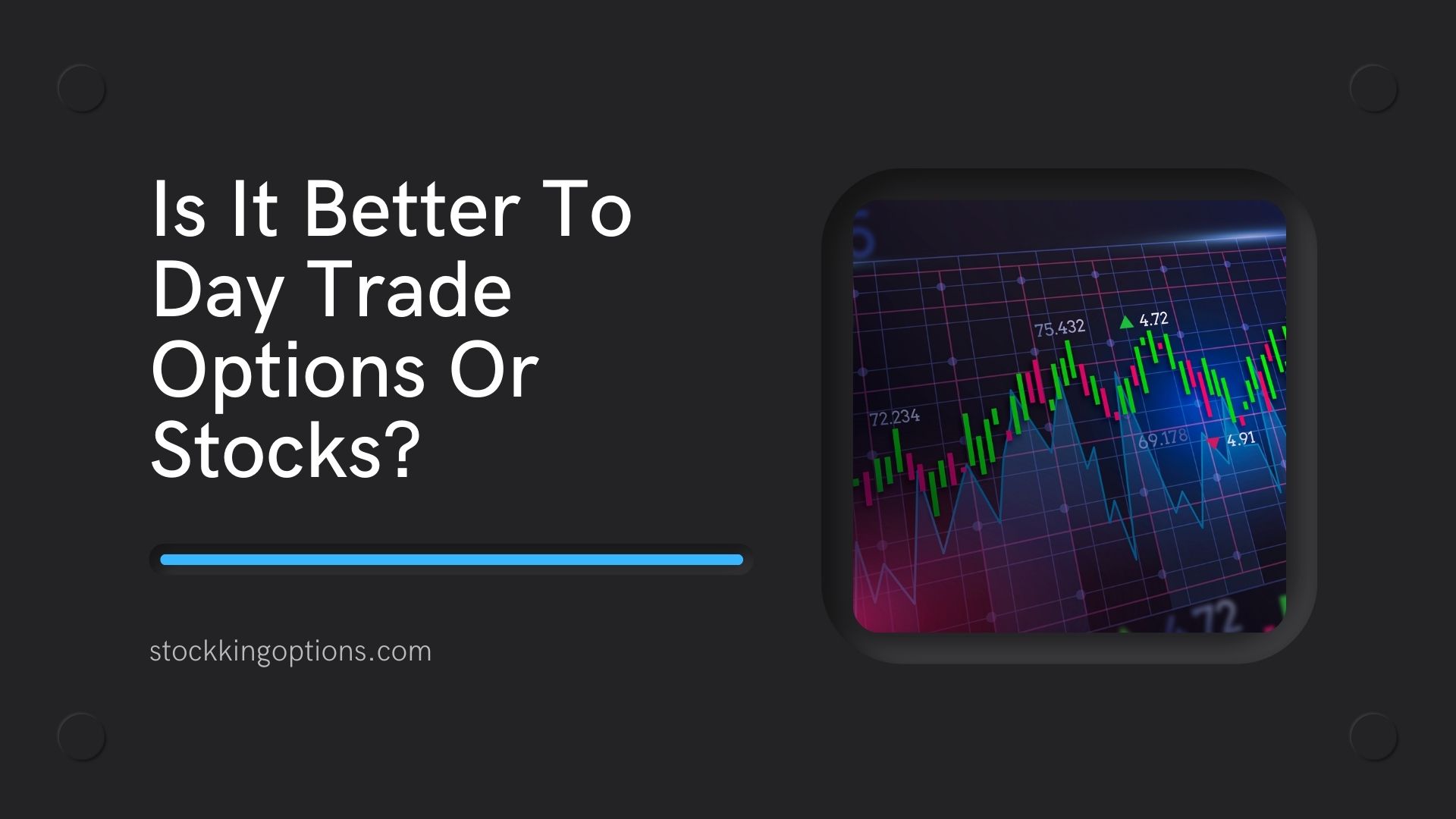
Key Takeaway: Choosing between day trading options and trading stocks depends on factors like risk tolerance, capital, and market conditions. Explore pros and cons to determine the best fit for your trading style.
Is day trading options or stocks better? The answer varies based on factors like risk tolerance and market conditions. Options offer leverage and flexibility, while stocks provide simplicity and stability. Consider your goals and preferences when making this decision.
Understanding Differences Between Options And Stocks
When it comes to day trading, many people often debate between options and stocks. While both options and stocks provide opportunities for traders to make profits in the short term, there are distinct differences between these two types of investments. In order to determine which is better for day trading, it is important to first understand the differences between options and stocks.
1. Ownership vs Contract
The main difference between options and stocks lies in the underlying asset. When you buy a stock, you are buying a share of ownership in a company. This means that as a stockholder, you have voting rights and may receive dividends when they are declared by the company. On the other hand, buying an option gives you the right to buy or sell an underlying asset (usually a stock) at a predetermined price within a specific time period.
2. Risk & Reward Potential
Both options and stocks involve risk, but they differ in their potential for reward. With stocks, your maximum loss is limited to the amount invested but your potential profit is unlimited if the stock price goes up significantly. On the other hand, with options, your maximum loss is limited to the premium paid for the contract but your potential profit can be much higher depending on how much the underlying asset moves.
3. Time Frame & Liquidity
Stocks are generally considered long-term investments while options have shorter time frames due to their expiration dates. This makes them more suitable for day traders who want quick profits rather than holding onto an investment for an extended period of time.
In terms of liquidity, stocks tend to be more liquid as they are actively traded on exchanges throughout regular market hours whereas options can be illiquid at times due to low volume or wider bid-ask spreads.
4. Strategy & Flexibility
With stocks, there is only one way to make money – by buying low and selling high (known as “going long”). However with options, there are several strategies that traders can use such as buying and selling calls and puts, spreads, straddles etc. This adds a level of flexibility for traders to choose from depending on their market outlook.
5. Trading Costs
Another factor to consider is the trading costs associated with options vs stocks. Typically, trading options involves lower transaction costs compared to stocks as you only need to pay the premium for each contract rather than purchasing a full share. However, this cost may add up if you intend to trade frequently in large volumes.
It can be said that both options and stocks have their own unique characteristics which make them viable for day trading but they also have distinct differences that must be taken into consideration before making a decision. Ultimately, the choice between options and stocks will depend on individual preferences, risk tolerance and market conditions. It is important to thoroughly understand these differences before making any investment decisions.
Comparing Profit Potential And Risk
When it comes to deciding between day trading options or stocks, one of the main considerations is the potential for profits and the level of risk involved in each option. Both options carry their own unique advantages and challenges, and understanding them thoroughly can help you make an informed decision.
Profit Potential:
The profit potential in day trading stocks can be significant. Depending on market conditions and your chosen strategy, it is possible to make large gains in a short period of time. Stocks are also generally more liquid compared to options, meaning they can be easily bought and sold at any time during market hours. This allows for more flexibility in terms of finding profitable opportunities throughout the day.
On the other hand, day trading options can offer even higher profit potential due to leverage. Options contracts give traders the right to buy or sell a stock at a predetermined price within a specific timeframe. This means that with a smaller investment, you can control a larger number of shares than if you were buying stocks outright. If done correctly, this leverage can result in exponentially higher profits.
Risk:
With great profit potential comes great risk – a factor that cannot be ignored when considering day trading options or stocks. Day traders need to have a thorough understanding of risk management strategies as there is always the possibility of losses, regardless of which security they are trading.
When it comes to stocks, one major risk factor is volatility. Stock prices can fluctuate significantly throughout the day based on various factors such as economic news or company announcements. This high volatility makes it crucial for traders to closely monitor their positions and have stop-loss orders in place to minimize potential losses.
Options trading involves inherent risks associated with derivatives like time decay (the loss of value over time), strike price changes, and implied volatility fluctuations. It requires advanced knowledge about how these factors influence an option’s value as well as proficiency in using techniques like hedging and spread trades to limit exposure.
In conclusion,
Day trading both options and stocks involve a certain level of risk, but it ultimately depends on the trader’s abilities, market conditions, and chosen strategies. Stocks offer high flexibility with relatively lower risk while options come with higher profit potential but require more advanced knowledge and risk management skills. Ultimately, it is essential to thoroughly research and understand both before deciding which approach aligns better with your trading style and goals.
Exploring Combined Strategies For Diversification
Diversification is a key concept in the world of investing and is often touted as a way to mitigate risk and potentially increase returns. However, when it comes to day trading, the idea of diversification may seem counterintuitive. After all, day traders are focused on making quick profits from short-term price movements in specific stocks or options.
But what if there was a way to combine strategies for diversification while still being able to capitalize on the opportunities presented by day trading? This is where exploring combined strategies for diversification can come into play.
One approach to combining strategies for diversification in day trading is through sector rotation. This strategy involves shifting investments between different sectors of the economy depending on their current performance and outlook. For example, if technology stocks are performing well one month, a day trader may focus on trading options or stocks within that sector. The next month, they may shift their focus towards consumer goods or healthcare companies.
By incorporating sector rotation into their day trading strategy, traders can not only spread out their risk across different industries but also take advantage of market trends and potential opportunities for profit in various sectors.
Another way to explore combined strategies for diversification in day trading is through asset allocation. This involves dividing investments among different classes of assets such as stocks, bonds, commodities, and currencies. By spreading out investments across these different asset classes, traders can reduce their overall risk exposure while potentially increasing their chances of making profitable trades.
Additionally, some traders also use pair trading as a means of diversifying their portfolio while still maintaining a focus on short-term trades. Pair trading involves identifying two similar securities (such as two tech stocks) with inverse pricing patterns and taking long positions in one while simultaneously taking short positions in the other. This allows the trader to hedge against potential losses while still being able to capture gains from market fluctuations.
Incorporating more than one strategy for diversification into your day trading plan can also provide flexibility and versatility in your approach. By having multiple strategies at your disposal, you can adapt to changing market conditions and adjust your trading tactics accordingly.
Exploring combined strategies for diversification in day trading can provide a well-rounded approach that balances risk with potential profits. Whether it’s through sector rotation, asset allocation, pair trading or a combination of different methods, incorporating diversification into your day trading strategy is key to achieving long-term success in the markets.




